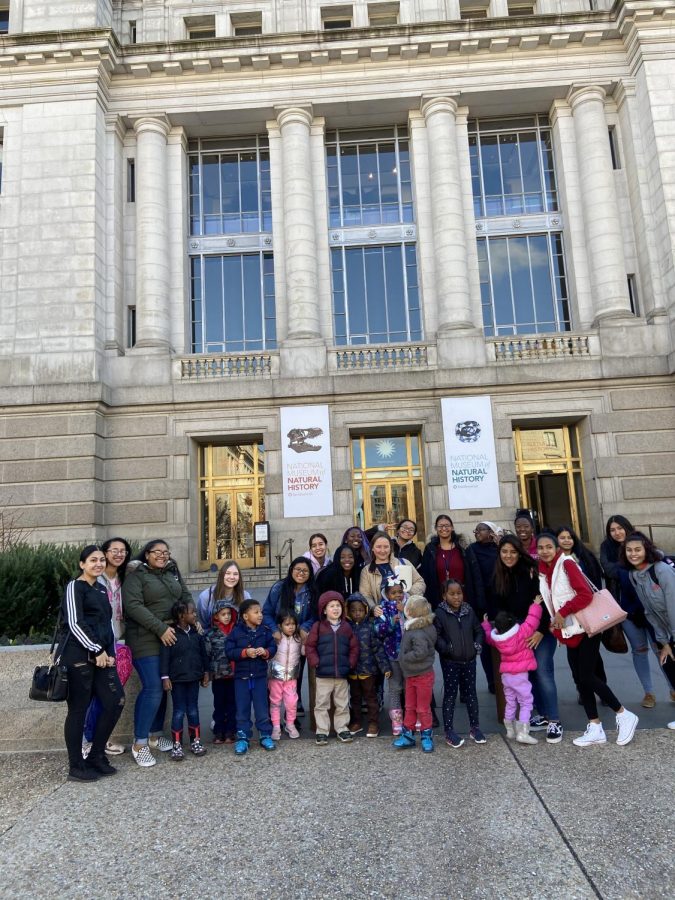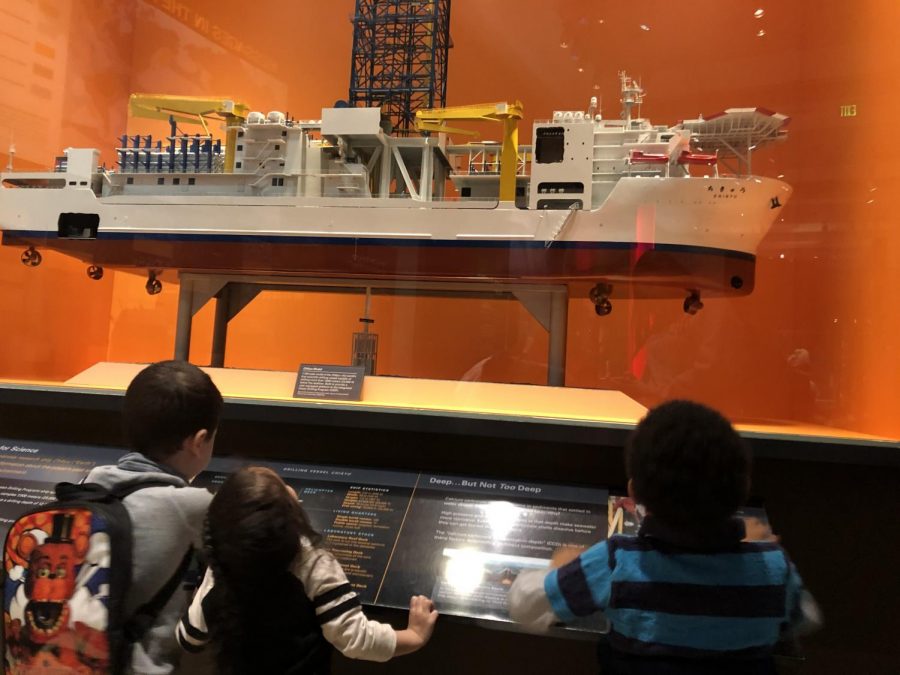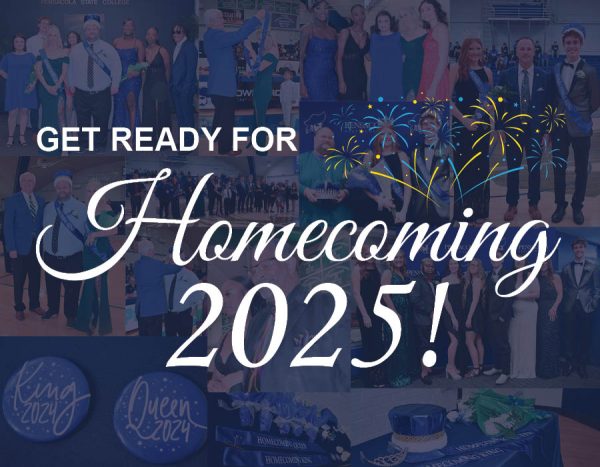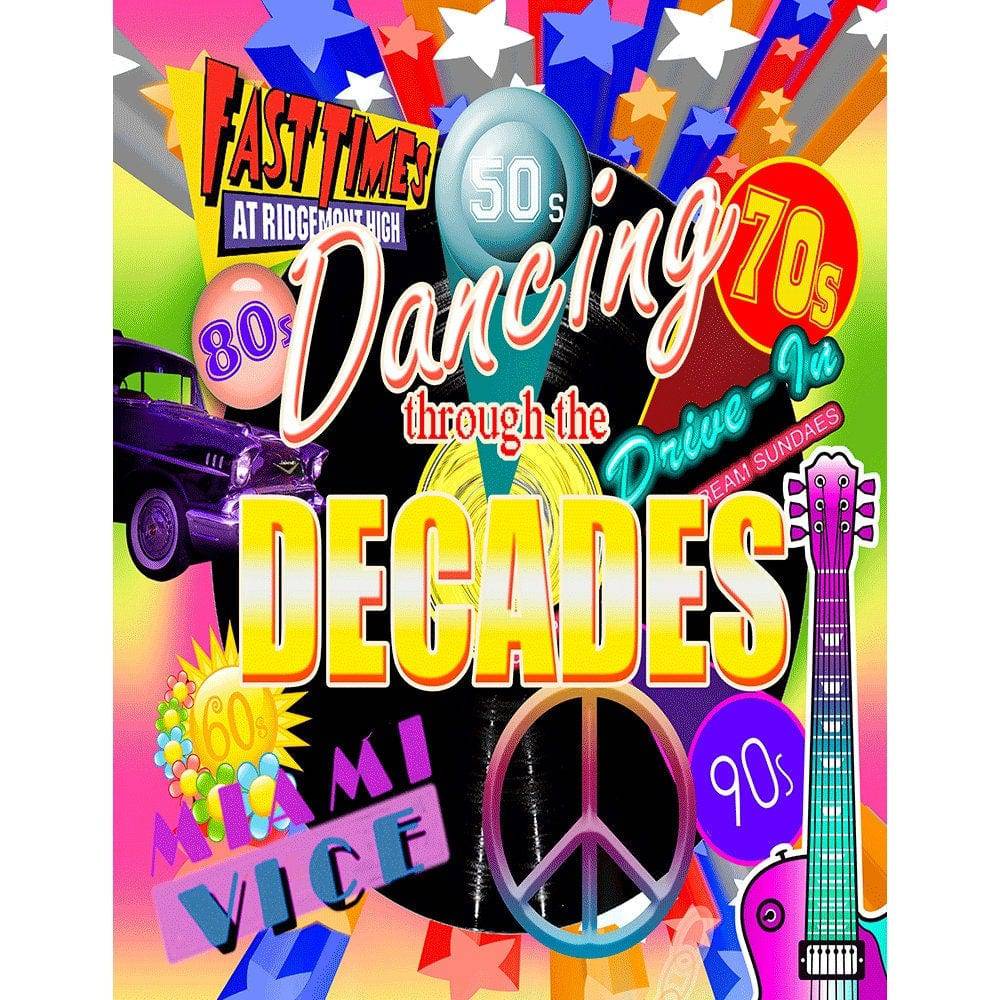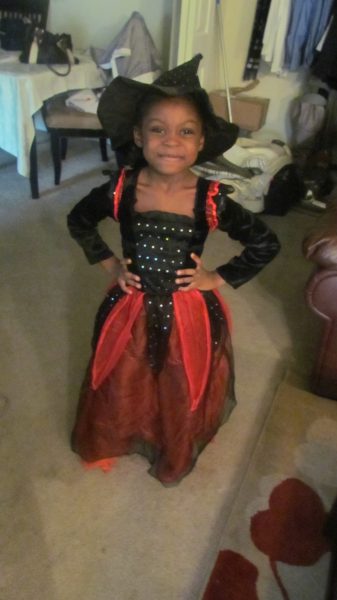Child development students take preschoolers on field trip to Smithsonian Natural History museum
Child Development preschoolers, high school students and teacher Melissa Cloyd outside the Smithsonian National Museum of Natural History.
Preschoolers and advanced child development students from Watkins Mill High School went to the Smithsonian’s National Museum of Natural History in December to learn more about the world hands on.
Each preschooler paired up with two high school students as they walked through the museum, stopping to learn about the animals that they saw along the way including everything from dinosaur fossils and a mammoth to fish in a coral reef. Two parent chaperones joined the group as well.
“There was a T-rex there. It was super big,” preschooler Wyler said.
The preschoolers paid nothing for the trip and high school students paid five dollars to help cover the cost of transportation as Smithsonian museum admissions are free.
“None of [the kids] had ever been to that museum before. Most of [the teachers] had never been before, so it’s always good to go outside the village and… see different things,” child development teacher Melissa Cloyd said.
“[My favorite part was] honestly their reactions because for everything they saw, they were like ‘Whoa, look at this! This is so big,’” junior Ashley Neyra added.
“I liked the fish. I got to say hi, [but] they have to stay in the water,” preschooler Paule said.
The trip benefited both the student teachers and kids. “[The student teachers] got the experience of providing an experiential learning activity to go along with what we’ve been doing in class,” Cloyd added.
“I think [the purpose] was so that the kids could get out of school for a little while and so they could get to experience something new because I don’t think a lot of them get to go out a whole lot,” senior Charity Johnson said. “They were getting to experience something that they don’t normally get to see, like dinosaurs and fossils.”
“Having them learn a little bit more outside of the classroom is always good for them since they’re still growing,” Neyra added. “It’s [beneficial to] have that exposure to the museums in Washington.”
Your donation will support the student journalists of Watkins Mill High School. Your contribution will allow us to purchase equipment and cover our annual website hosting costs.
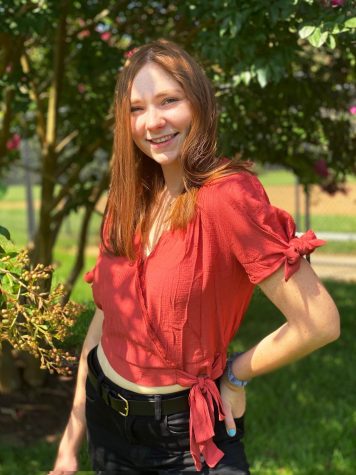
Katelyn “Katie” Burley is a senior and the Co-Editor-in-Chief of the Watkins Mill High School Current. She is in the IB Career Program for Early Childhood...



